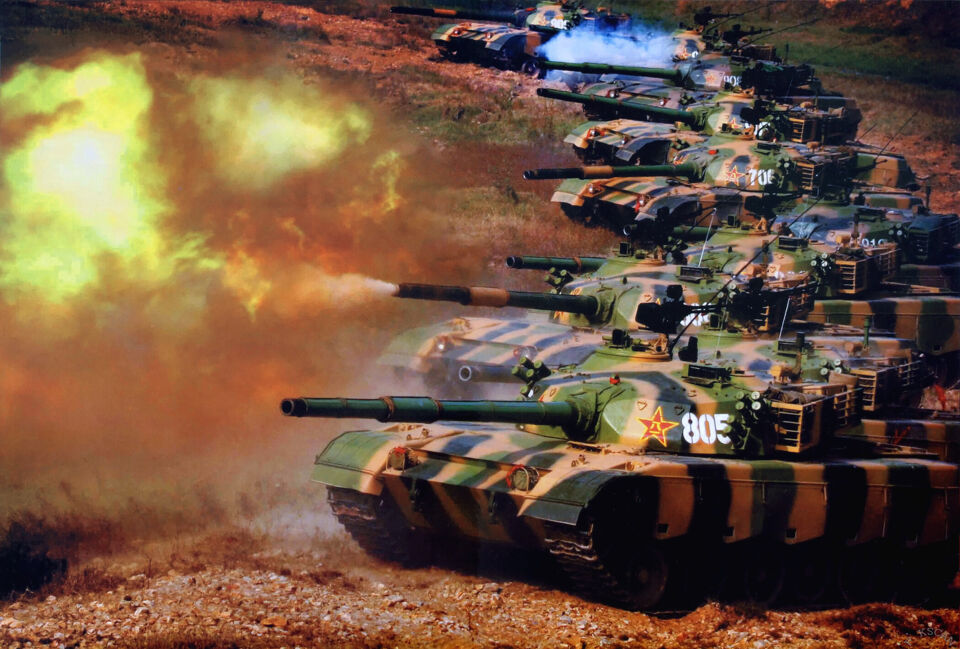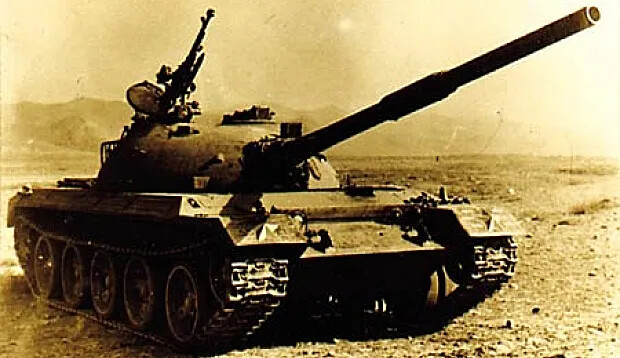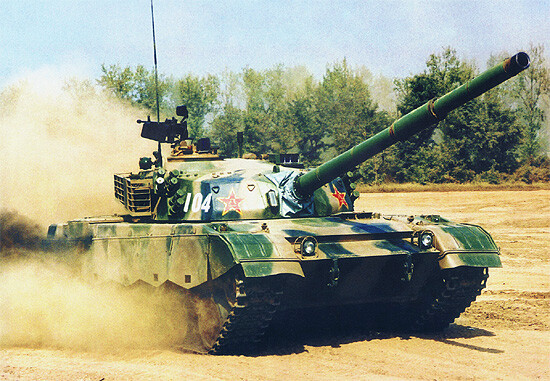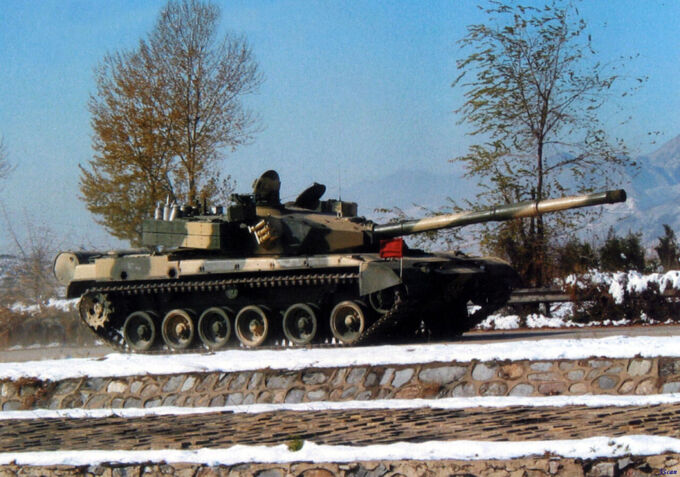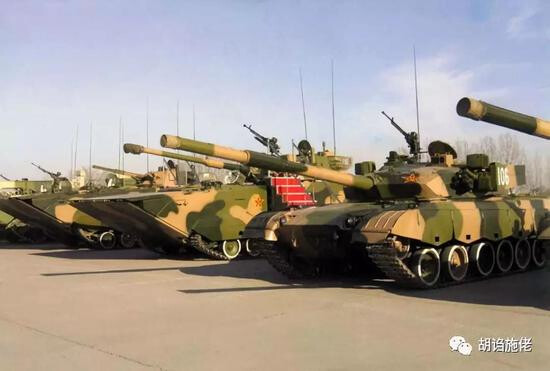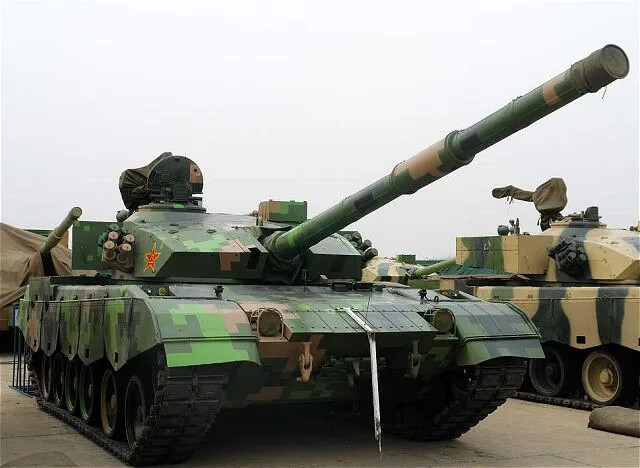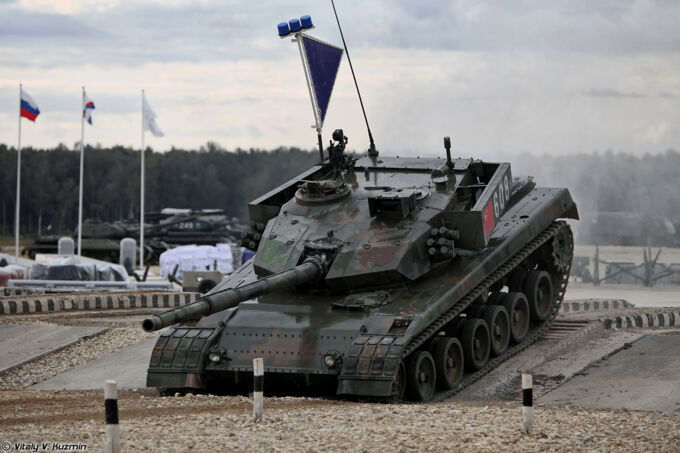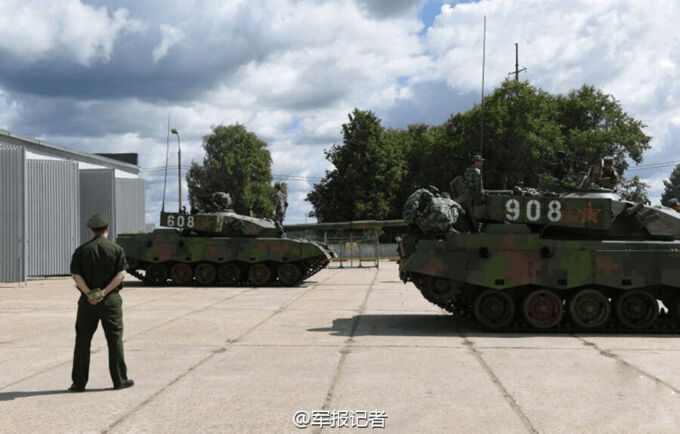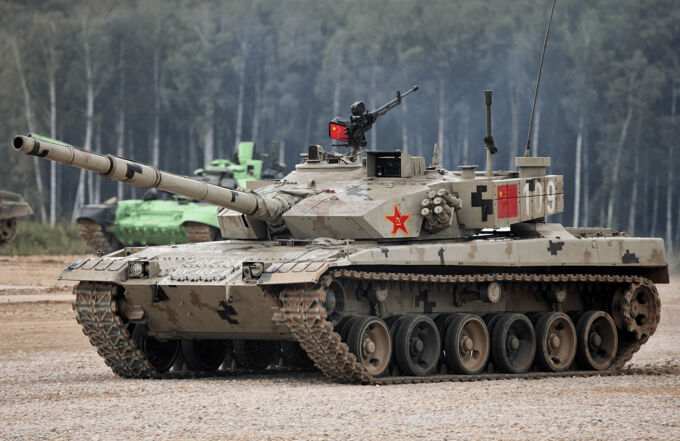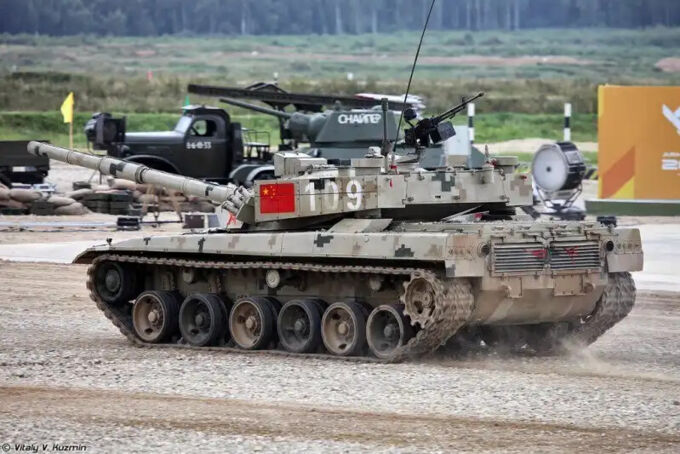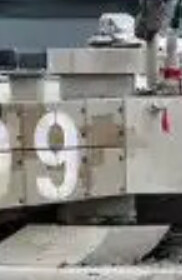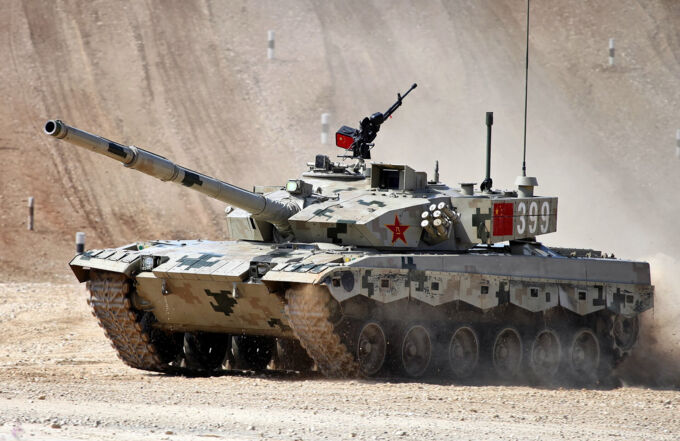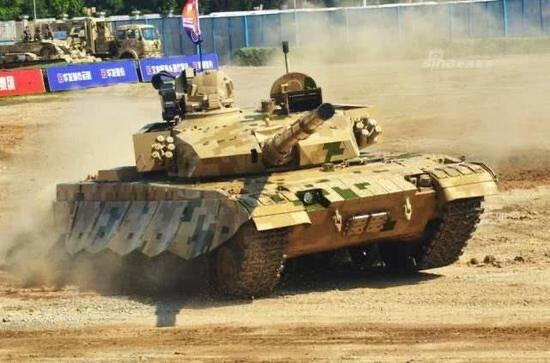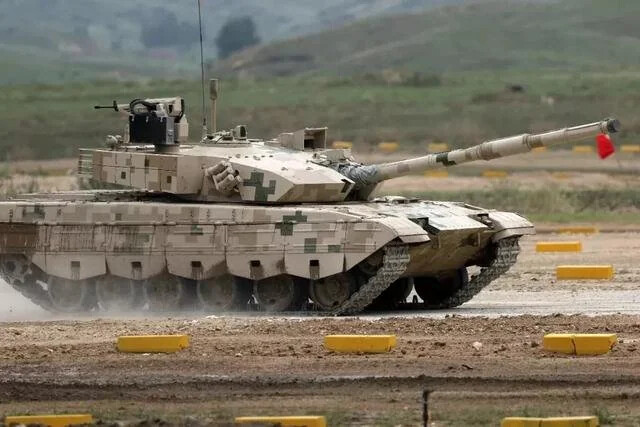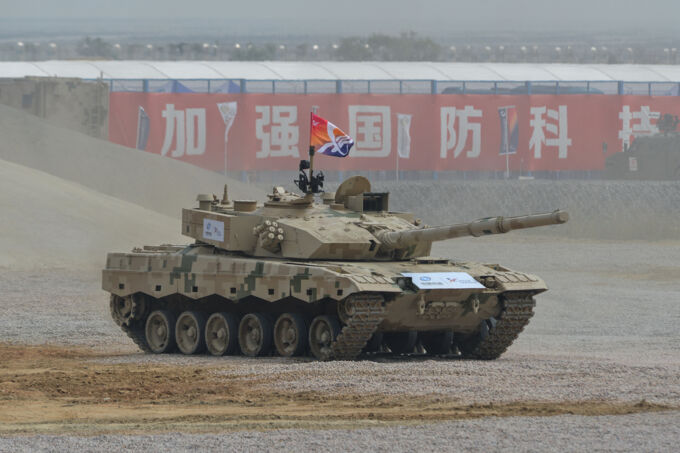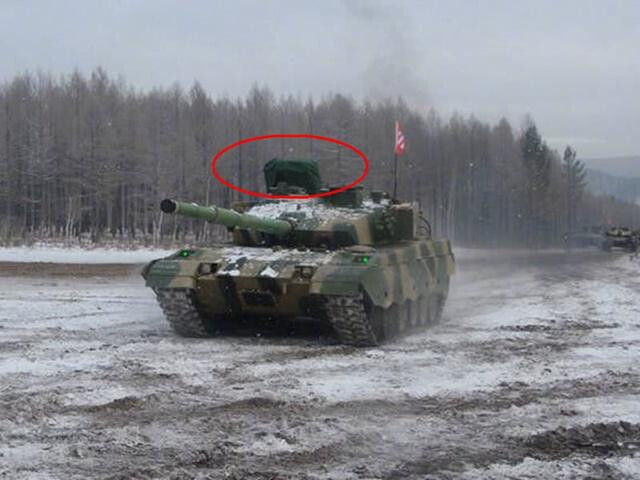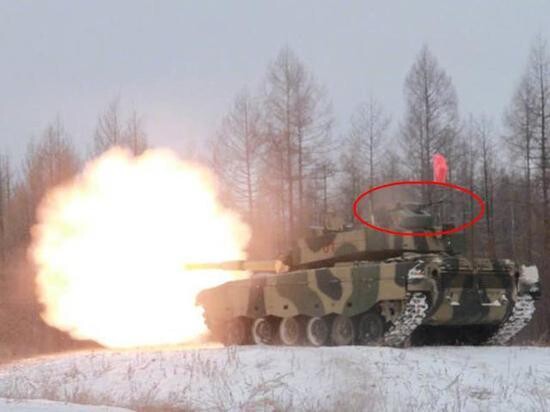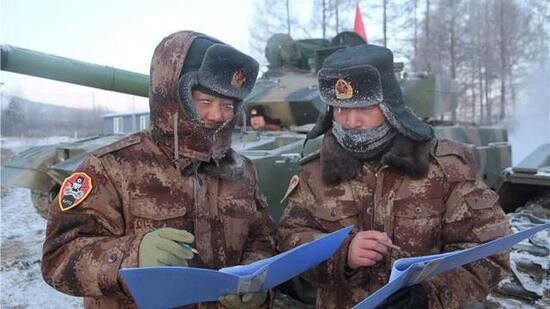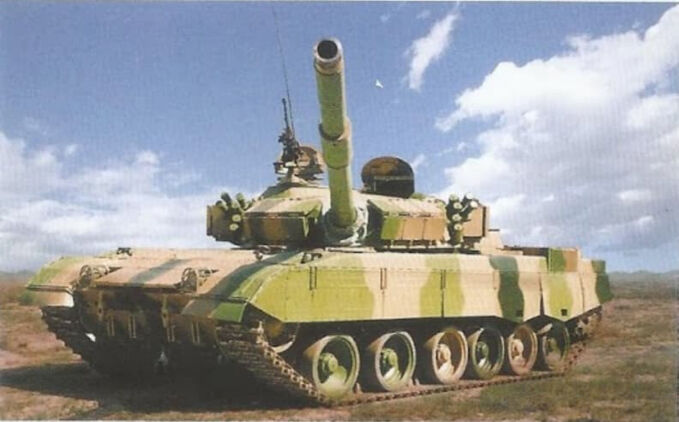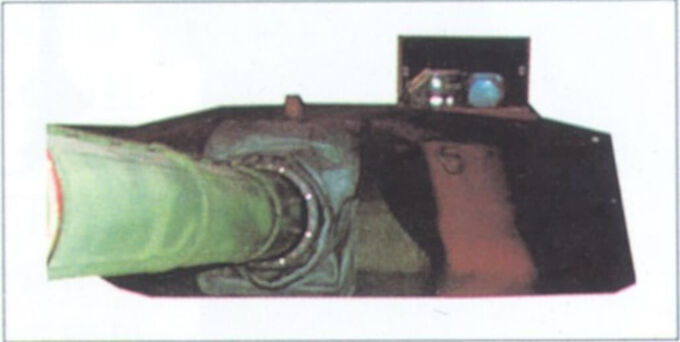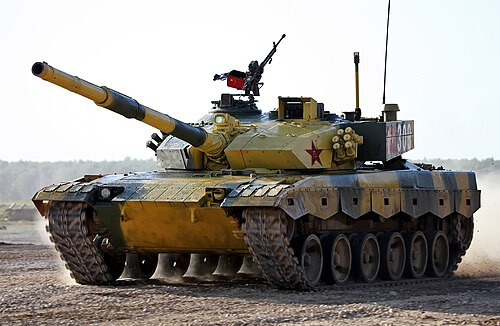The ZTZ96 is China’s most advanced second generation main battle tank (MBT). But its history actually extends well before the ZTZ96 actually appeared and its development history is extremely messy (not that any tank development project is ever neat), filled with several weird prototypes and secretive vehicles. So, let’s take a look at the history of this tank’s development, its main variants, and all of those weird 1-off prototypes that never made it to production.
Table of contents
I would like to thank kleinerPanzer for the massive help in researching, reviewing, and correcting inaccuracies in this article. This article would not have been possible without her.
A “brief” history of the WZ122 series
The history of the ZTZ96 does not start with it. The standard ZTZ96 bears the industrial designation of WZ122H, but it is preceded by a long line of WZ122s stretching all the way back to the ZTZ80 and, before that, the 122 series tank project.
The development began in November of 1969. That was when the Fifth Ministry of Machine Building of the People’s Republic of China (中华人民共和国第五机械工业部) issued a specification to Factory 617 (617厂) for a new MBT. This new MBT project was known as the 122 Medium Tank (122中型坦克) and in February of 1970, it was placed under the larger banner of Project 2-4 (二四会战) which was the name for the broader plan to develop a set of next generation armored vehicles for the People’s Liberation Army (PLA) (中国人民解放军).
The 122 eventually spun off into several prototypes. There were the 1221 and Factory 704's (704厂) “704” prototype (the official name is unknown; it is potentially the 1222), as well as the 1224 with composite armor and developments of it: the 1226 and 1226F2. One of the 1221 prototypes is present in War Thunder, though it is erroneously named the Object 122MT “MC” and incorrectly has the missiles from the “704”.
Within the 122 family are the 1223 and 1225, though their relation to the other 122s is ostensible at best. The 1223 was developed following the restarting of the project in 1978 by Factory 617 and Research Institute 201 (201研究所). The 1223 is largely unrelated to the 1221, 2, 4, 6, and 6F2, and is actually a development of the ZTZ69 featuring a new 105 mm gun, engine, and suspension. Developed from the 1223 was the very similar 1225. The 1225 was eventually accepted into service with minor modifications as the ZTZ80 and given the industrial designation WZ122—a designation derived from the 122 tanks.
The ZTZ80 began the lineage of the WZ122 tanks that led to the ZTZ96. The ZTZ80 and its derivatives such as the Type 85 and ZTZ88 have a gargantuan amount of variants. Here is a list of all of the main variants up to the ZTZ96:
This list is a modified version of one originally compiled by Canton_Sharkoach and a more detailed version of it, as well as several excellent articles on Chinese vehicle history, can be found here.
| Tank designation | Industrial designation | Notes |
|---|---|---|
| ZTZ80 | WZ122 | |
| ZTZ80-1 | WZ122A | Probably a prototype (or provisional designation), later redesignated ZTZ88. |
| Type 80-II | BW122 | Export vehicles just had the Type designation instead of ZTZ |
| Type 85-I “Storm-I” | WZ1227 | |
| Type 85-II “Storm-II” | WZ1228 (or maybe WZ1227F2) | |
| Type 85-IIA “Storm-II” | WZ1228? | This one might be the same as the 85-II, or it might not be, we’re not exactly sure and the 85-I, II, and “IIA” are kind of all a disaster. |
| Type 85-IIAP | BW122C/D | Early models were the BW122C, later models were the BW122D. |
| Type 85-IIM | ? | Probably an early name for the Type 85-IIAP. |
| Type 85-III | ? | |
| ZTZ88 | WZ122A | Same vehicle as the ZTZ80-1, but redesignated ZTZ88. |
| ZTZ88B | WZ122E | |
| ZTZ88A | WZ122G | Despite having an earlier variant designation, the ZTZ88A actually came after the ZTZ88B. |
| ZTZ88C | WZ122H | Redesignated to ZTZ96. |
The ZTZ88s were not direct developments of the Type 85s. The ZTZ88s were the direct descendents of the ZTZ80s, while the Type 85s were offshoots. The ZTZ88 is the same vehicle as the ZTZ80-1, and the ZTZ88B and A are descendants of that. The ZTZ88C was created by marrying a Type 85-IIAP (sources say it’s a IIM, but they’re probably the same thing) turret to a ZTZ88 hull. This vehicle, which recieved the WZ designation WZ122H, was quickly redesignated as the ZTZ96.
The original ZTZ96
The ZTZ96 is this tank’s (ostensibly) original variant. The most distinct feature of the ZTZ96 compared to its later variants is the lack of the applique armor on the turret that gives those later variants' turrets their very distinctive blunted arrowhead shape. This very rectangular front is because of the additional spaced armor on the turret. The ZTZ96 also became the first tank in PLA service that used a domestically designed 125 mm gun: the ZPT88C. Though others had been tested before, the ZTZ96 was the first to use one in service.
However, though the ZTZ96 was the most advanced tank in the PLA’s inventory when adopted, it was already a decade behind the times. It lacked a thermal imager, commander panoramic viewer, and compared to western MBTs, was woefully outclassed, especially in armor. For reference, the inception of the ZTZ96 was contemporary with the inception of the Leopard 2 A5 and M1A2 Abrams.
Prototypes of the ZTZ96A and the ZTZ96 “G”
Almost immediately after the ZTZ96 entered service, upgrades were already being planned to attempt to address the ZTZ96's several shortcomings. The final upgrade resulting from these several projects is the famous ZTZ96A, but several other upgrade possibilities and designs were considered along the way, with some ideas eventually being incorporated into the final ZTZ96A.
The most known, though still relatively obscure, is a prototype with a much more pointed, “beak"-like turret, resembling that of early models of the Merkavah (מרכבה). This vehicle exists in War Thunder as the ZTZ96A (P), though its actual designation is unknown. Even its WZ designation is unknown, other than that it is likely the WZ122[something]. Contrary to what several western sources and the Armored Warfare devblog for the ZTZ96A say, the name “ZTZ96G"/"ZTZ96 Gai” (ZTZ96改) is not accurate. “改” is Mandarin for “change,” “alter,” or “modify,” and while it is colloquially very common, it is extremely uncommon/entirely nonexistent in actual official PLA designation schemes.
This prototype was one of the proposals for an upgraded ZTZ96. The main purpose of the new, highly angled “beak” turret was to provide increased protection against kinetic penetrators. It is unknown what was in the “beak” and it could be either air or composite, though air is more likely. However, what is known is that the composite armor configuration behind the beak is not the same as either the ZTZ96 or production ZTZ96A. This armor configuration may have had protection against kinetic penetrators of around 630 mm, though this is highly speculative.
2 of the 3 prototypes were fitted with an electro-optical (EO) active protection system (APS) in the form of infrared dazzlers on the sides of the turret. This EO APS has been referred to as JD3, though this name applying to the EO APS on the prototype ZTZ96s is disputed since that name has also been applied to the claimed laser defense weapon on the ZTZ99. It is likely based on the Russian Shtora-1 system or the Ukrainian Varta system, but it being based on Varta is more likely since Pakistan was also trialing Varta on the al-Khālid around the same time and the al-Khālid is a Pakistani variant of the Chinese MBT-2000 that was developed in concert with China. This concept was ultimately dropped from the final production ZTZ96A because it is ineffective against 3rd generation ATGMs which use beam-riding, semi-active laser homing, or millimeter wave radar guidance and cannot be fooled by infrared signals. What identifies the difference between the prototypes is EO jammers and splash guards.
One of the prototypes has the EO jammers and no splash guard, another has a splash guard and no EO jammers, and the third has both a splash guard and the EO jammers. The 3 of them having the same camouflage color scheme but slightly different camouflage patterns also supports them being 3 separate vehicles.
It is unknown why this armor configuration was never chosen. If the “beak” is filled with composite, then it very likely could be the difficulty that China faced at the time of producing composite bricks of such a large size as well as their difficulty of maintenance. If it is filled with air, it may be that the armor configuration of the prototype that became the production ZTZ96A was simply more effective, cheaper, or easier to maintain. All of the information is classified so nothing is known for certain.
Speak of the devil and it shall appear, let’s talk about the ZTZ96A prototype with the final armor configuration.
This prototype, which appears to have been in testing at the same location as the “beak” turret prototypes at the time the above image was taken, is extremely similar to the production ZTZ96A. The only notable difference is that it, like 2 of the 3 “beak” turret prototypes, has EO jammers on the sides of the turret. This indicates that the system fitted to the prototype ZTZ96As and the concept of an EO APS more broadly was being tested on the ZTZ96A after the final armor configuration was already developed.
There is also a possible second prototype fitted with EO jammers that has the final armor configuration. Notably, this one also has rectangular holes in the bottom of every side skirt like the production ZTZ96A. However, given that the camouflage is completely different and that it is in a different location, it is also possible that this is the same vehicle as the first prototype but with a new paint scheme and new side skirts.
The ZTZ96A
All of these prototypes led to the creation of the ZTZ96A (industrial designation WZ122R). The ZTZ96A is much the same as the final confirmed prototype for it, though it is lacking EO jammers and has rectangular holes in the bottom of each of the side skirts instead of just the first 2. The ZTZ96A offered greater efficacy than its predecessor, with new FY4 explosive reactive armor (ERA) on the turret and upper glacis plate, as well as possessing a new thermal imager for the gunner. The new 12V150ZLD engine also offered small increase in mobility over the 12V150LC engine of the ZTZ96 and preceding ZTZ88, even with the ZTZ96A’s added weight. However, the ZTZ96A still severely suffered in mobility. The terrain of China, particularly the west, is very mountainous and the weak powerpack of the ZTZ96A heavily limited its ability to effectively traverse it.
The reason the powerpack was not majorly upgraded, as well as the reason that the ZTZ96A more broadly was not the most advanced it could possibly be, is because that was never the purpose of the ZTZ96. The ZTZ96 was not meant to be the forefront of modern combat. The ZTZ96 was meant to be cheap, easy to mass produce, and a stopgap measure while the ZTZ99 was still under development. Deep modernizations mean a more expensive and harder to produce tank, and that is not what China needed from the ZTZ96. It didn’t need it to be good, it needed it to be good enough, and so the upgrades to the ZTZ96 that brought it to the ZTZ96A were just that: good enough.
The ZTZ96A1
This one was made to win a race, mostly.
In 2014, Russian held the first Tank Biathlon World Championship. 41 countries were invited and 12 participated. Russia gave most countries T-72B3 tanks, but China chose to bring its own ZTZ96As. They performed… fine. China came in at a relatively respectable 3rd place, just behind Armenia in second and Russia in first, but the ZTZ96A’s flaws, particularly its mobility, were very noticable. In the final relay race, Russia came in first at about 75 minutes and Armenia second at about 80, but China trailed Armenia by nearly 11 minutes for its third place prize.
China was not very happy with this result and so, in 2015, China brought the new ZTZ96A1 to the second Tank Biathlon World Championship. The ZTZ96A1 contained quite a few modifications designed to make it more mobile. The tank had new, hollow roadwheels, the add-on track armor on the lower glacis plate had been removed, and the ERA on the upper glacis plate was removed, all to reduce the tank’s weight, potentially by up to 1 ton. The front fenders had also been reinforced as all nations participating had damaged theirs during the mobility portions of the competition the previous year. Additionally, the antenna was moved to the back of the turret from the roof.
However, most critically, the tank had a new engine. The ZTZ96A1 replaced the 800 hp 12V150ZLD engine of the ZTZ96A with the 900 hp 12V150ZLE engine, which had still been under development at the time of the Tank Biathlon World Championship the previous year. The new powerpack also added an integrated intercooler to the engine’s supercharger to increase engine intake volume and reliability under high load and a new, higher resistance air filter with an additional pre-filter to improve air intake quality. One easy way to visually recognize the ZTZ96A1, beyond the missing ERA and new antenna position, is by a new bulge-like structure on the right side of the engine deck.
It appears that only 2 ZTZ96A1s were ever made, No. 608 and No. 908, and they were never seen again after the 2015 Tank Biathlon World Championship. However they did fulfill their intended role. China achieved its 2015 second place prize in roughly 79 and a half minutes, about 11 and a half minutes faster than its third placement the previous year. The ZTZ96A1 may also have acted as a testbed for powerpack upgrade concepts seen on the later ZTZ96B.
The ZTZ96B
The ZTZ96B is the most recently revealed version of the ZTZ96. It was first seen loaded on a truck in 2016 en route to the 2016 Tank Biathlon. Unlike the several known prototypes of the ZTZ96A, the development history of the ZTZ96B is a little more mysterious. However, we do know some things. Its development began in 2015 and 3 variants of the ZTZ96B exist: an early variant seen at the 2016 Tank Biathlon and a later variant seen at the 2017, and a final variant seen from the 2018 Tank Biathlon onwards. To date, all ZTZ96Bs have been seen only at or en route to Tank Biathlons.
All variants of the ZTZ96B have their main improvements set in the mobility department. The vehicle features a new 1000 hp engine, possibly a derivative of the 8V150HD engine on the ZTZ99 and certainly an engine of Chinese origin (despite claims of it being a 1200 hp copy of the Ukrainian 6TD-2), increasing the speed to 65 km/h. This new powerpack also has a new transmission, either the CH700 or CH1000 (depending on the source), and is also supported by a revised exhaust. The ZTZ96B’s exhaust being on the rear of the tank is the single easiest way to differentiate it from the preceding ZTZ96A and A1. It also features new communications and computer systems. It is said to have an upgraded fire control system (FCS) developed from sights found on Norinco’s export tanks or possibly derived from the ZTZ99, and though this very much could be true is true, there seems to currently be no concrete source for this. The vehicle is also known to have a better suspension, though the exact changes are unknown, and all variants retain the reinforced front fenders from the ZTZ96A1.
The earliest model ZTZ96B has been seen at the 2016 Tank Biathlon only. This model is identified by the lack of ERA on the upper glacis plate, like the ZTZ96A1, though this variant does have track armor on it, and an ovular structure in the back corners of the turret that connects to the engine deck. This has been claimed to be a turret ventilator, but its connection to the engine deck makes this unlikely. Rather, it is likely to improve ventilation for the engine. This is supported by the fact that, when the turret rotates, the connection is broken, meaning that the engine deck and the ovular structure were never solidly attached, but merely lined up. This likely means that the engine can still ventilate without this structure, but the structure may improve that capability. Finally, the 2016 model of the ZTZ96B lacks side skirts, unlike all other ZTZ96 variants.
This later model ZTZ96 was first seen at the 2017 Tank Biathlon. It has the ERA on the upper glacis plate reinstalled, something not seen on the previous ZTZ96B and the ZTZ96A1, a new muzzle reference sensor (MRS) above the gun breech, and the ovular ventilator connecting the turret corners to the engine deck has been changed to a cylindrical one. Finally, it features new side skirts with rectangular holes in them, reminiscent of the side skirts on the ZTZ96A, but these are much shorter.
The final ZTZ96B variant is the variant seen at every Tank Biathlon from 2018 onwards. This variant is identical to the 2017 model of the ZTZ96B, but lacks an MRS. This is not due to any functional benefit, but because China was banned from using an MRS on its tanks after the 2017 Tank Biathlon since no other tank present had it—a situation that is, objectively speaking, very funny.
Given that the ZTZ96B has 3 distinct variants, this begs a pretty important question: why are none of them in service yet? We cannot know for sure, but the most likely reason is that the ZTZ96B did exactly the 1 thing the PLA needs the ZTZ96 to not do: be expensive. The ZTZ96B is not a wildly expensive tank, but an MRS, massively upgraded engine, and potentially a new FCS all cost money, and those costs add up. The ZTZ96 needs to be cheap and easy to mass produce—a requirement that does not synergize with anything even close to state-of-the-art systems. It may finally be some semblence of truly good, but whats the PLA needs and wants is just good enough. Good enough is cheap, but good is not.
The VT2
The VT2 is the export version of the ZTZ96 and comes in 2 variants: the VT2 and VT2B. The VT2 is an export variant of the ZTZ96A and the VT2B is an export variant of the ZTZ96B. Contrary to popular belief, there is no such thing as the VT2A. There is merely the VT2 and VT2B. The reason the VT2A designation was skipped was likely for marketing purposes so VT2B could line up with ZTZ96B.
The base VT2 has only been purchased by Tanzania and 1 of them was first displayed at a parade in a stadium in December of 2021 and only 5 are known to exist, though more are possible. It has been suggested that the deal for them was signed in 2019 with the first deliveries occurring in 2021, but this is not completely confirmed. It is also unknown how much the deal was worth.
Unlike the VT2, which has been sold to a grand total of 1 country, the VT2B has the accolade of being sold to exactly no one. However, the VT2B’s development is more complicated and it has more than just 1 variant (kind of).
Also unlike the VT2, which is a carbon copy of the ZTZ96A, the VT2B is decently different from the ZTZ96B. It features a remote controlled weapon station (RCWS) on the turret roof that houses a machine gun, new, longer side skirts, and the vertical ventilation connectors from the turret corners to the engine deck are gone entirely.
The VT2B was first seen at the 2016 Zhūhǎi Airshow. This 2016 fit of the VT2B has rubber sideskirts.
The VT2B was seen again at a 2017 Norinco defense exhibition. The configuration was mostly the same, but this time, it had steel sideskirts.
The VT2B’s last sighting was when it was presented again at Zhūhǎi 2018, but it was not exactly a VT2B, to say the least. The “VT2B” variant presented in at Zhūhǎi 2018 is nearly identical to the 2018 Tank Biathlon configuration of the ZTZ96B, having the cylindrical ventilation connectors in the turret corners leading to the engine deck and lacking an MRS. In fact, it is so similar that it is almost certainly just a 2018 Tank Biathlon ZTZ96B repainted for Zhūhǎi 2018 and is not actually a VT2B at all.
In May of 2018, an article was published purporting to show cold weather tests of the ZTZ96B that had taken place in March. However, what the article showed was not a ZTZ96B. It was a VT2B, identifiable by its longer side skirts, lack of ventilation connectors between the turret and engine deck, and the RCWS on its turret roof. The side skirts appear to be the steel ones, indicating that it is specifically the 2017 configuration of the VT2B. However, interestingly, this VT2B was missing the MRS seen on the VT2B in 2016 and 2017. This could be for a couple reasons. It could be that these images were taken much earlier during the VT2B’s development, it could be that this was one of the Tank Biathlon ZTZ96Bs converted to a VT2B configuration, or it could be for other entirely unknown reason.
In 2022, this same vehicle was seen again in a PLA promotional video, thought the footage may have been taken earlier. Following this, a Reddit post on r/LessCredibleDefence made the rounds claiming this was a potential ZTZ96 upgrade, with claims circulating around it about it having a CITV and an APS. These are patently false. There is no evidence that it has a CITV or APS and the RCWS and new, longer side skirts indicate it being a VT2B, not some novel ZTZ96 upgrade.
The VT2 series has been largely an export failure. The reason for why is partially clear and partially murky. The VT2 is likely the cheapest of the 3 major Chinese export options: the VT2, MBT-2000, and VT4, though exact price figures do not exist. However, it is also the least capable. Compared to the VT2, the MBT-2000 is much faster, has a CITV with hunter-killer capability, has a much higher resolution thermal imager, possesses an entrenching blade, and is more broadly a much more capable tank. Though it is more expensive, it provides greater capability compared to its price. This is why the MBT-2000 has seen export success in Bangladesh, Morocco, and Myanmar, and in Pakistan as the al-Khālid (الخالد), with nearly 700 produced in total. However, it should be noted that this is less true of the VT2B which is much more capable than the VT2. Meanwhile, both the VT2 and VT2B are outclassed by the VT4 in every aspect, and the VT4, like the MBT-2000, has seen decent success. It is currently being operated by Nigeria, by Thailand as the T̄h.Hlạk 60 (ถ.หลัก 60), and by Pakistan as the Ḥaidar (حیدر), with combined total of over 700 either produced or on order—a number likely to further increase in the future.
Other ZTZ96 prototypes
In addition to all the main variants of the ZTZ96 and the prototypes that can be definitively placed into a development series (such as the ZTZ96A prototypes), there are other prototypes that we cannot place into a direct series and may be either offshoots or prototypes that did exist in a series but for which we have too little evidence to confirm that.
Before getting into the prototypes themselves, it should be noted that distinguishing between the early ZTZ96 and the Type 85 is quite difficult. The Type 85 directly developed into the ZTZ96 and, while there are differences that can be used to obtain a probable identification, nothing is certain. The most important difference is that the Type 85 has an MRS while the early ZTZ96 does not. This is not the same MRS as on the ZTZ96B. Rather, the MRS exists on the end of the gun barrel with the receiver for it on the turret roof next to the gunner’s optics. However, while most Type 85s have an MRS, not all of them do, so the lack of an MRS is only a partial indicator.
This vehicle was seen in a 2012 Norinco brochure, though it is almost certainly much older. It is also likely a ZTZ96 (though, as mentioned above, it could be a Type 85), but it has some interesting features. It has new ERA reminiscent of the MBT-2000 on the turret and hull, side skirts with a mostly flat design until the final 3 panels—a configuration not seen on any other ZTZ96, mountings for an entrenching blade, and an optics housing from the ZTZ96A. This new optics housing indicates it likely has a thermal sight since the modified, much larger optics housing on the ZTZ96A was built to accommodate the new thermal sight. The entire vehicle gives off, for lack of a better term, “we have MBT-2000 at home” vibes, as the overall visual configuration highly resembles the MBT-2000.
This may be a prototype that fits into the development series from the ZTZ96 to the ZTZ96A, but given its sighting in a Norinco brochure, it is just as, if not more possible that this was some form of export venture offshoot from the ZTZ96.
Pretty much nothing is known about this vehicle. It is a cutout of a ZTZ96 turret, but it features the ZTZ96A’s gunner’s optics with a thermal sight. Once again, this could fit into the development series from the ZTZ96 to the ZTZ96A, but it also could be a seperate offshoot. Nowhere near enough is known to concretely say anything though.
This vehicle is in a similar situation to the previous one. We know nothing about it. It is a ZTZ96A and it appears to have what might be ERA mounted on the rear, but that structure could be something else. We simply do not know.
Conclusion
That has been an overview of the development history of the ZTZ96. Currently, the number of ZTZ96s built across all models totals over 2,500. There are certainly missed variants that we do not know about, classified features of these variants, and missing information about variants listed here. A lot of the information is classified and unknown. But this is an overview of what is known and the history of their development.
Sources
- “2017‘坦克两项’赛事的中国队看点_发动机_比赛_底盘.” 搜狐, 2021.
- Binnie, Jeremy. “Tanzania Parades VT2 Tank.” Janes, 2021.
- Canton_Sharkoach. “User: Sakaban_Sharkigu — War Thunder Wiki.” Internet Archive, 2023.
- Das_Fish. “A Potential ZTZ-96 Upgrade.” Reddit, 2022.
- kleinerPanzer. “The Picture of Some Rare Vehicles in China or Republic of China and Taiwan.” War Thunder — Official Forum, 2024.
- kleinerPanzer. “ZTZ96A1: Dedicated Biathlete.” War Thunder — Official Forum, 2022.
- kleinerPanzer. “ZTZ96B (Early): Flexing New Muscles.” War Thunder — Official Forum, 2022.
- “强劲动力助 96B 挑战新高度.” 现代兵器, 2016.
- Sengupta, Prasun K. “First VT-4/MBT-3000 Shipment Bound for Karachi.” Trishul, 2020.
- The Human Oddity. “‘Object’ 122 TM.” Reddit, 2022.
- The Human Oddity. “‘Object’ 122TM [REVISED].” Reddit, 2022.
- 王辉. “沉默的洪流—记中国96式冷战时意.” 全球防务丛书, vol. 1, pp. 10–23.
- Wikipedia Contributors. “Type 96 Tank.” Wikipedia, Wikimedia Foundation, 2025.
- 新浪军事. “中国96B主战坦克进行寒区试验 将成未来跨海登陆主力.” 新浪军事, 新浪网, 2018.
- Yu, Andrea. “ZTZ96.” Tank Encyclopedia, 2023.
- “ZTZ96/Type 96.” Army Guide, 2015.
